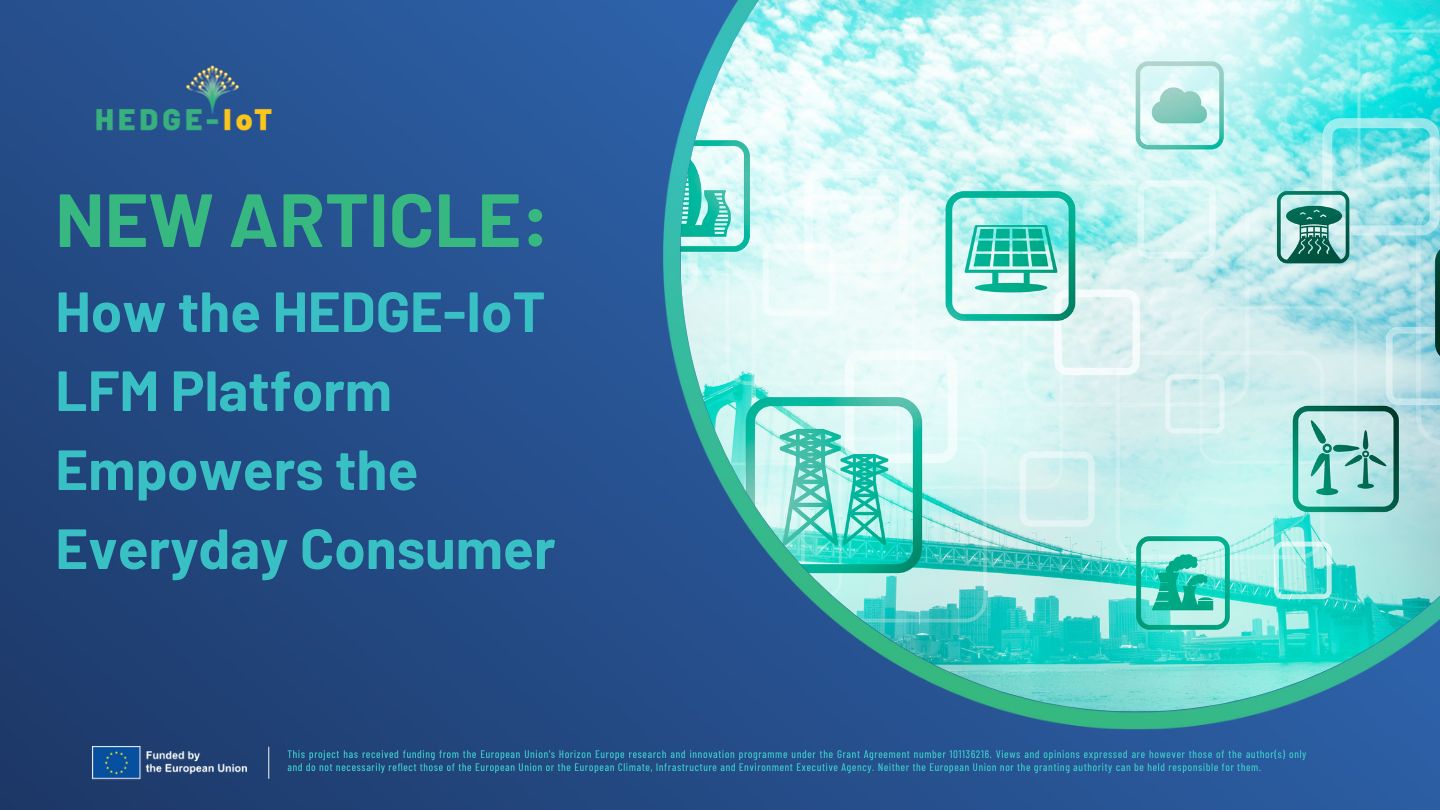
For decades, our relationship with the power grid has been a one-way street: we use electricity, and at the end of the month, we pay the bill. We’ve been passive consumers in a system managed by large, centralized companies. But what if you could change that? What if you could actively participate in the grid, help keep it stable, and even get paid for it?
The energy world is changing fast. With more solar panels on rooftops, batteries in garages, and electric vehicles in our driveways, our homes are becoming small power hubs. This creates a huge opportunity, but also a challenge: how do you coordinate all these small, distributed energy resources to help the local grid, especially during peak times when it’s under stress?
This is where the HEDGE-IoT project steps in.
We are building a Local Flexibility Market (LFM) – think of it as a digital marketplace designed to help manage the local electricity grid. It’s a platform that turns your “flexibility” into a valuable product, which is made possible by giving your Flexibility Service Provider (FSP) partial control of your smart devices to make slight, automated adjustments.
In this article, we’ll break down how this market works in a simple, step-by-step way. We’ll show you how HEDGE-IoT is creating the tools to empower you, the consumer, to move from a passive role to an active participant in a smarter, greener, and more resilient energy future.
So, how does this all work in practice? How does the HEDGE-IoT platform take the flexibility from your home and turn it into a valuable resource for the grid? The process can be broken down into three simple stages.
Part 1: Joining the Market
To participate, you don’t interact with the market directly. Instead, you partner with a Flexibility Service Provider (FSP), granting them partial control of your specific smart devices.
This control is always exercised within your implied “comfort zone.” This means the FSP will only make slight, automated adjustments that are designed to be unnoticeable. For example, a change within the comfort zone could be altering your air conditioner’s temperature by just a degree or two for a short period. You maintain your comfort while your device provides valuable flexibility to the grid.
Part 2: A Day in the Life of a Flexibility Trade
Imagine it’s a hot summer afternoon. Many people in your area turn on their air conditioners, and the local electricity grid is starting to feel the strain. Here’s what happens next:
- The Grid Manager Needs Help: The Distribution System Operator (DSO), who manages the local grid, anticipates a potential problem. To solve it, they go to the HEDGE-IoT platform and place “buy” orders for flexibility in your specific area and for a specific 15-minute window.
- Your FSP Makes an Offer: Your FSP sees this request. Based on the preferences you have agreed upon, the FSP submits a “sell” order to the platform on your behalf. This order basically says, “We can offer a certain amount of energy reduction at this price”.
- The Platform Finds the Perfect Match: Once the window for submitting offers closes, the HEDGE-IoT platform gets to work. It gathers all the buy and sell orders and runs a transparent and fair auction to find the single best “market clearing price” that gets the grid the help it needs in the most cost-effective way.
- The Green Light: The proposed trades are sent back to the grid manager (DSO) for a final safety and feasibility check. If the DSO gives the “go-ahead” confirmation, the trades are considered final. The FSP’s system then automatically sends a signal to your smart air conditioner to adjust its consumption slightly for those 15 minutes, always staying within your pre-defined comfort zone. You’ve just helped stabilize the local grid, likely without even noticing a change.
Part 3: From Flexibility to Financial Reward
This is the best part. You’ve helped stabilize the grid, likely without even lifting a finger, and now it’s time to be rewarded for it.
Think of your FSP as the coach of a “virtual team” made up of hundreds of smart homes like yours. When the grid needs support, your coach offers up the team’s combined power to win the game. Every successful trade is a victory, and the team gets paid for its performance.
After the game, the prize money is shared among all the players who contributed—including you! This is your reward for playing an active role in creating a smarter, more efficient grid. You didn’t just consume energy; you provided a valuable service and were compensated for it.
As we’ve seen, the HEDGE-IoT Local Flexibility Market is much more than just a complex piece of software. It represents a fundamental shift in our relationship with energy. It’s about moving away from a rigid, top-down system to a collaborative, community-based model where every participant has a valuable role to play.
By providing the tools for everyday consumers to participate in their local energy market, the platform unlocks a powerful set of benefits. It creates new opportunities for households to reduce their energy costs, provides the grid operator with a green and efficient tool to ensure stability, and ultimately paves the way for a grid that can more easily integrate renewable energy sources.
This is the future of smart energy: decentralized, democratic, and sustainable. It’s a future where you are no longer just a consumer paying a bill, but an empowered partner in building a more resilient and efficient community for everyone. The HEDGE-IoT project is proud to be laying the groundwork for this exciting new reality.
Authors:
Emmanouil A. Bakirtzis (HENEX)
Aikaterini Forouli (HENEX)
- Sotirios Filippou (HENEX)